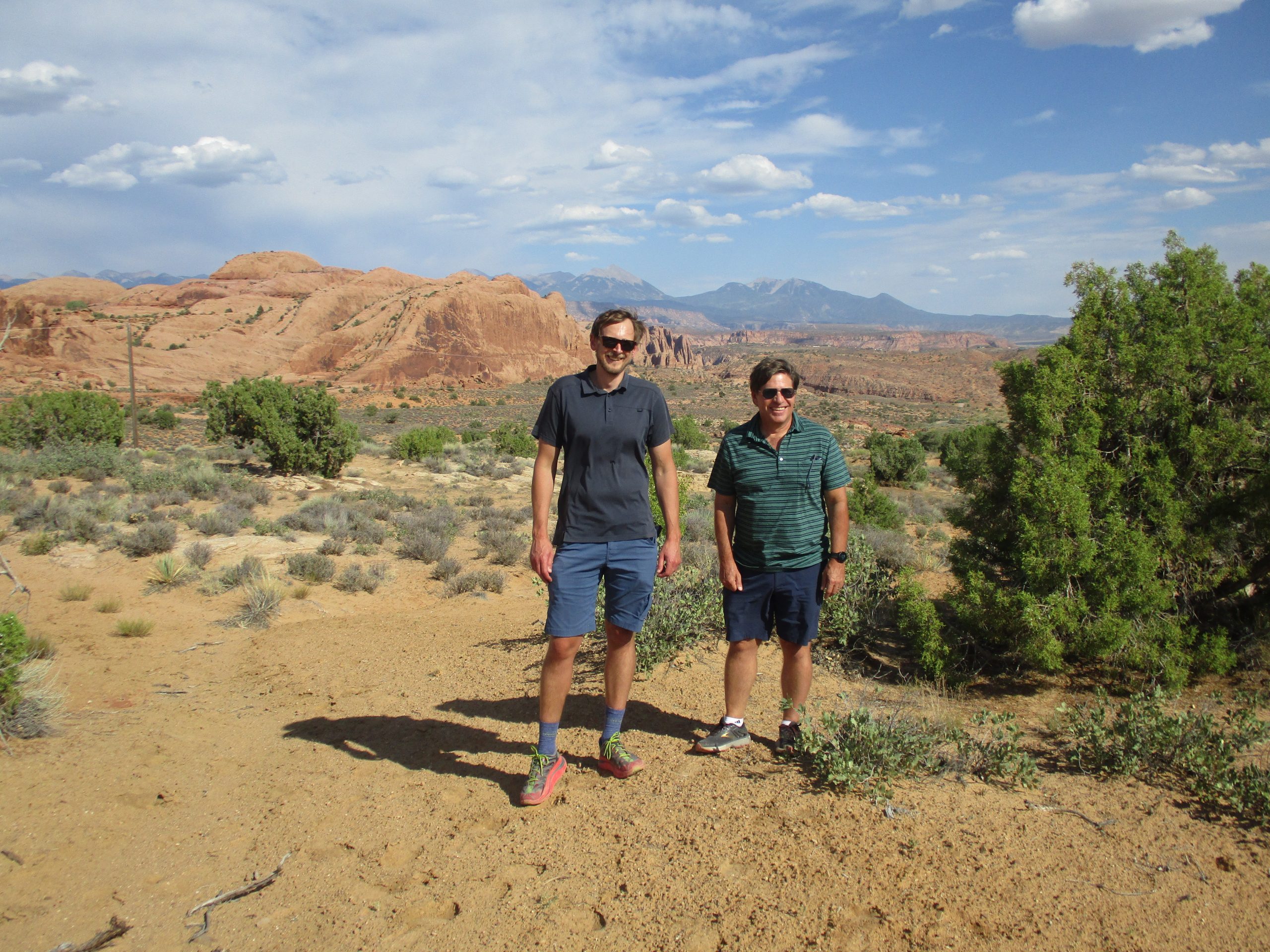Some information may be outdated.
Heavy equipment has been busy grading a path up the red rock ledges and hills that climb from the edge of Moab up to the Sand Flats area. The machines are preparing for the installation of close to a mile’s worth of utilities—water, sewer, power and telecom—from the city limits to the future site of the controversial Lionsback Resort development.
The project has been the subject of contention for over a decade, with some Moab residents opposed to the project because of its proximity to the Sand Flats Recreation Area and its location on open, undeveloped lands; others are concerned about effects on the watershed or increased traffic on the narrow, winding Sand Flats Road.
A lawsuit was filed against the city and the developer in 2009, and was ruled in favor of the developer, but the project continued to stall due to the economic recession. Another lawsuit was filed against the project in 2017, after the City of Moab classified significant changes to the approved project plan as ‘minor,’ side-stepping public hearing requirements. In 2020, courts ruled that the city violated its own laws in approving the revised plans, which expanded the number of hotel rooms among other changes.
The developers have launched the Lionsback project under the original design approved in 2009, which includes a 50-room hotel with a 7,000 square-foot conference center, 179 residential units ranging in size from 1,300 to 3,000 square feet, 18 employee housing units, and 128 acres of open space on the 175-acre lot.
The first phase of construction will be 34 “casitas,” or single-family residences sold as single lots. At a Moab City Council meeting on Aug. 11, City Planner Nora Shepard explained that the lots’ zoning would also allow for those units to be used as overnight rentals.
“We would love to see permanent residents purchase them,” said Jon Dwight, president of Invent Development Partners, which is undertaking the project, in a separate interview. “It’s just a matter of who’s interested.”
Beginning work
Rather than digging up Sand Flats Road to put in the utilities, the developers are using an old four-wheel-drive access road west of the pavement.
“This costs us a lot more money to do it over here, because you can see the terrain and what we’re having to do,” said Dwight, who estimated that the utility infrastructure would cost about $5.6 million.
“But we think it’s better for the community, and we’re trying to do the right thing,” he said.
While the developers are paying for the installation, the utility infrastructure will become the property and responsibility of the City of Moab once complete.
The 50-room hotel was originally meant to be part of the first phase of construction, but Dwight said they are putting that element on hold while the hospitality industry regains its balance after the plunge caused by the coronavirus pandemic.
“The hospitality world is upside down because of COVID,” he said. However, he is confident that the industry will recover and said the company “absolutely will build a hotel at some point.”
“I do believe that drive-to markets and destination resort hotels will recover quicker than hotels in downtown urban areas and business hotels and things like that,” Dwight added.
He said that after all the obstacles the project has gone through, he’s willing to wait out another hurdle.
“This is a long-term project for us,” he said. “We intend it to be a legacy project for many decades to come and we think it’s going to be a great benefit to the community.”
Dwight also emphasized that the company intends to preserve access to the Hell’s Revenge Jeep trail, which crosses through and exits on the Lionsback Property.
Water concerns
John Weisheit is the conservation director of Living Rivers, a Moab-based nonprofit that was a plaintiff in both lawsuits filed against the project. Weisheit said the Skakel Spring aquifer, which the development will sit on top of, was his primary concern and reason for filing the lawsuits.
“There’s nothing more important than water,” Weisheit said, describing how the Skakel Spring flows through town; supplies irrigation for Grand County citizens; feeds the Scott and Norma Matheson Wetlands Preserve, which shelters endangered razorback sucker fish; flows into the Colorado River; and also provides city drinking water.
Water runoff on the porous sandstone surface in the Lionsback area can filter down into springs below, and if contaminated, could carry pollutants with it.
If pollutants from the development make their way into the aquifer, Weisheit said, “we will return to court.”
Drinking water sources like Skakel Spring have protection zones designated by the State Department of Water Resources, explained Moab City Engineer Chuck Williams, with “zone one” being the area immediately surrounding the source, continuing through zone four as the distance from the source increases.
Various parts of the Lionsback property, Williams said, are in zones ranging from two to four, but the developers have agreed to comply with the stricter regulations of zone two across the entire development to protect the watershed.
“I’m comforted to know that they’re respecting the groundwater,” Weisheit said. However, he said he still believes that it would have been better if the city had never approved the project.
“They’re complying with the law and then some, but that doesn’t eliminate the possibility of something going terribly wrong,” Weisheit said.
Dwight said he hopes to have the utility installation complete in early January of 2021 and begin building the access road for the first phase of construction in the spring.
“I think in the end, we’re bringing the right things to the community, and it’s something that people want,” Dwight said.
After years of delays, development near Sand Flats is underway
Appreciate the coverage? Help keep local news alive.
Chip in to support the Moab Sun News.





